Advertisements
Advertisements
Question
In the pair of triangles given below, the parts shown by identical marks are congruent. State the test and the one-to-one correspondence of vertices by which the triangles in the pair are congruent, the remaining congruent parts.

Solution
In ∆PRQ and ∆TRS,
side PR ≅ side RT (given)
side QR ≅ side RS (given)
∠PRQ ≅ ∠SRT (vertically opposite angles)
∴ By the SAS test, ∆PRQ ≅ ∆TRS.
∴ side PQ ≅ side ST,
∠QPR ≅ ∠STR,
∠PQR ≅ ∠TSR.
RELATED QUESTIONS
In the given figure, if AB = AC and ∠B = ∠C. Prove that BQ = CP.
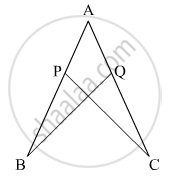
Prove that:
(i) ∆ ABC ≅ ∆ ADC
(ii) ∠B = ∠D
(iii) AC bisects angle DCB
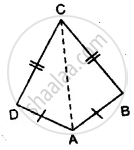
In the given figure, prove that:
(i) ∆ ACB ≅ ∆ ECD
(ii) AB = ED
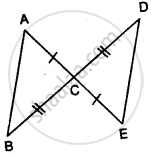
Which of the following pairs of triangles are congruent? Give reasons
ΔABC;(BC = 5cm,AC = 6cm,∠C = 80°);
ΔXYZ;(XZ = 6cm,XY = 5cm,∠X = 70°).
ΔABC is an isosceles triangle with AB = AC. GB and HC ARE perpendiculars drawn on BC.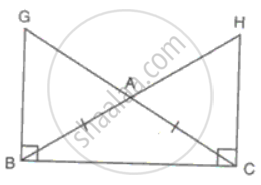
Prove that
(i) BG = CH
(ii) AG = AH
In the given figure, AB = DB and AC = DC. Find the values of x and y.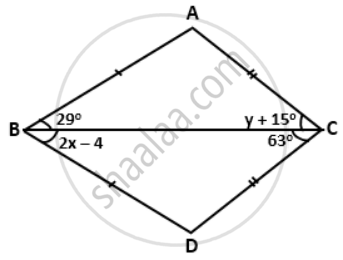
If AB = QR, BC = PR and CA = PQ, then ______.
In triangles ABC and PQR, ∠A = ∠Q and ∠B = ∠R. Which side of ∆PQR should be equal to side AB of ∆ABC so that the two triangles are congruent? Give reason for your answer.
“If two sides and an angle of one triangle are equal to two sides and an angle of another triangle, then the two triangles must be congruent.” Is the statement true? Why?
The congruent figures super impose each other completely.
